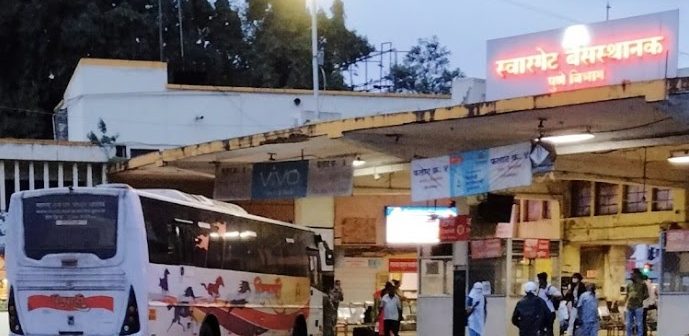Swargate, one of Pune’s most iconic and busiest transport hubs, has long served as a critical interstate bus terminus for the Maharashtra State Road Transport Corporation (MSRTC). Despite its historical significance and daily use by thousands of passengers, the Swargate terminus faces significant challenges, particularly concerning infrastructure, safety, and management.
Deteriorating Infrastructure and Development Delays
Swargate has long been due for a facelift. Several infrastructure projects aimed at improving connectivity, such as the much-delayed Swargate metro station and the proposed pedestrian subway, are either incomplete or progressing at a sluggish pace. A subway connecting the MSRTC bus terminus with the metro station was slated to ease traffic congestion, but as of early 2024, it remains under construction, causing heavy traffic, safety hazards, and chaos for commuters(. The lack of safe pedestrian crossings and barricades around construction areas further exacerbate these problems.
Safety Hazards and Lack of Security
Swargate’s crowded premises present severe safety risks. Reports indicate that the bus stand is plagued by reckless driving from autorickshaws and private vehicles that frequently block key areas, posing a threat to both passengers and pedestrians. Additionally, overcrowding, poor lighting, and the absence of proper surveillance create an environment vulnerable to thefts and other crimes, leaving commuters feeling unsafe, particularly during the night.
Neglect and Inadequate Facilities
Despite Swargate’s importance as a transport hub, authorities have consistently neglected its upkeep. The bus terminus is often criticized for lacking basic amenities like clean waiting areas, sufficient restrooms, and proper seating arrangements for long-haul passengers. While the metro expansion promises to integrate Swargate into a multimodal transport hub by 2029, providing seamless connectivity, these plans remain distant, with little relief for travelers in the short term.
Risks for Travelers
For the thousands of commuters relying on the terminus, the risks are evident. Poor crowd management, hazardous crossings between bus bays, and insufficient law enforcement presence contribute to the overall chaos. The dilapidated conditions of the bus platforms, combined with sporadic maintenance, add to the discomfort and danger faced by travelers, particularly the elderly and physically challenged passengers.
Conclusion
While Swargate continues to serve as a key transit point for interstate travelers and local commuters, the terminal has unfortunately lagged in modernization and safety improvements. Until ongoing projects like the metro expansion and subway construction are completed, the daily risks and inconveniences will persist. Authorities need to prioritize the immediate safety of passengers and address the long-standing neglect of Swargate to restore its historical charm and efficiency.





